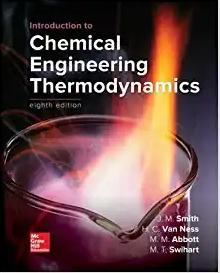Answered step by step
Verified Expert Solution
Question
1 Approved Answer
A pair of evaporators will be arranged in series to remove water from a salt solution ( i . e . , the salt solution
A pair of evaporators will be arranged in series to remove water from a salt solution ie the salt solution that exits the first evaporator will be the feed to the second evaporator The first evaporator will be operated at conditions sufficient to evaporate water at a rate of kmolh The second evaporator will be operated at conditions sufficient to evaporate water at a rate of kmolh You may assume that no salt exits either unit via evaporation. The salt solution that exits the first evaporator ie the feed to the second evaporator flows at a rate of kgh and contains a mixture by mass of water and salt.
a Before doing any calculations, draw and fully label a flow chart for this process including all knownsunknowns and relevant system boundaries
b A correctly drawn flow chart will include system boundaries the overall, evaporator and evaporator Perform a degree of freedom analysis for each system boundary and specify an order in which the problem could be solved to determine all unknowns.
c Calculate the composition mass fraction of the overall feed stream ie into the first evaporator
d Calculate the composition mass fraction of the exiting salt solution.
Step by Step Solution
There are 3 Steps involved in it
Step: 1

Get Instant Access to Expert-Tailored Solutions
See step-by-step solutions with expert insights and AI powered tools for academic success
Step: 2

Step: 3

Ace Your Homework with AI
Get the answers you need in no time with our AI-driven, step-by-step assistance
Get Started


